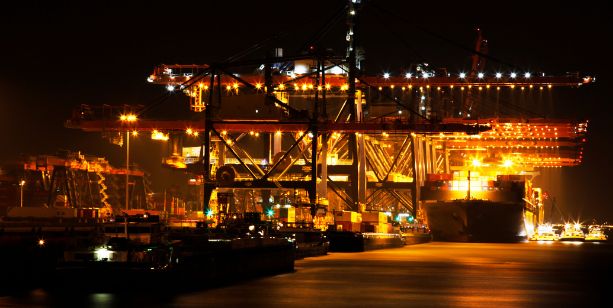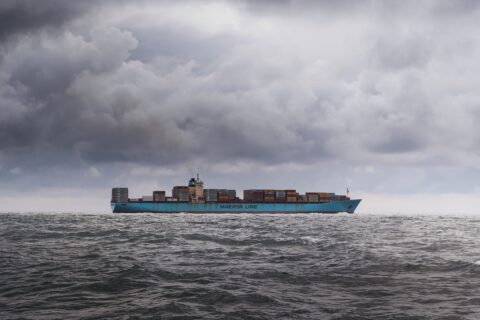If you’ve spent much time reading about the logistics sector, you will have come across the word ‘transhipment’ in one context or another. However, for many supply chain professionals, it remains an obscure concept. This article aims to give you everything you need to know about transhipment and its role in a supply chain. What is transhipment? Why is it important? How can you use it in your own business processes? Let’s find out.

What is transhipment?
Transhipment is the process of moving goods between ships, trucks, trains, or aircraft while in transit. Shipping goods to their final destination, then transferring them to a different set of transport modes is known as transhipping. There are two types of transhipment: intermodal and multimodal. Intermodal transhipment occurs when goods are moved between different modes of transport while they are in the same truck, rail car, or ship, while multimodal transhipment occurs when goods are transferred between different vessels, vehicles, or rail cars. Transhipping is important because it allows shippers to choose the best mode of transportation for each leg of a journey, taking into account factors such as distance, costs, availability, and speed.
Why is transhipping used in supply chains?
The third-party logistics (3PL) industry is built on an inter-connected network of shippings and deliveries that criss-cross the globe, connecting suppliers, customers, and warehouses. 3PL providers are the link that connects all the pieces of your business together, providing a one-stop shop for the outsourced logistics and transportation functions that would otherwise consume too much of your own internal resources and finances. 3PL providers use intermodal and multimodal transhipment as a way to reduce the costs and complexities associated with moving different types and sizes of shipments between different locations. This system is also designed to increase the speed and service levels that customers receive from the logistics provider.
The importance of timeliness in transhipping
The down-and-dirty truth of the supply chain is that customers expect their orders to be delivered on time, every time. If you can’t meet that expectation, then your business suffers. Poor service levels are a common cause of customer dissatisfaction, and can lead to dissatisfaction in your own internal operations if not addressed. This can have a detrimental effect on your business, so it’s important that you have a contingency plan in place in case things go wrong, and an effective logistics partner to help you manage the situation. For the logistics providers involved in the chain, timeliness is the key factor in avoiding penalties and fines, and therefore in their profitability. Shippers and logistics providers work together to develop a detailed schedule of shipping dates and times, and a deviation plan to respond to unexpected disruptions.
Limitations of Transhipping
Despite its benefits in terms of meeting expectations for speed and accuracy, transhipping can also create an environment in which error and miscommunication can flourish. For instance, if a misread shipping label or incorrect identification number is missed during the transfer from one mode of transportation to another, then the shipment could end up at the wrong location. And the problems don’t end there; the shipment could take far longer to reach its final destination thanks to these extra steps. This is why it’s important for shippers and logistics providers to work together to make sure that everyone is on the same page. The shipper needs to know that the logistics provider can handle their shipments with the same level of care and attention as they would themselves, and the logistics provider needs to know the shipper’s expectations and requirements.
Key Takeaway
Transhipping is the transfer of goods between different modes of transportation while the goods are en route. It is a critical part of many supply chains because it allows the transportation modes that are most appropriate for each section of a journey to be utilized. For example, a certain type of goods may travel better by air whereas another type is better suited to traveling by sea. A typical supply chain might begin with the production of raw materials that are then turned into finished goods at a factory. These goods would be shipped to a warehouse operated by a 3PL provider where they would be put in inventory until a customer places an order for them. The logistics provider would then ship the goods to the customer. The entire process would include several instances of transhipping as the goods are transferred from one mode of transportation to another.
ProConnect Integrated Logistics – Your Freight Forwarding Partner
There are many freight brokers in the industry, you need to choose the right partner for your shipment. Your shipment is valuable, and we ensure we treat it like ours. ProConnect Integrated Logistics gets its expertise, experience, and value from working with its group company – Redington. Over the years, ProConnect has established itself as a preferred freight forwarder and logistics partner for many companies in the UAE and Saudi Arabia, catering to a variety of industries.
If you are looking for a partner to take care of all your logistics hassles, talk to us





 APP DOWNLOAD
APP DOWNLOAD